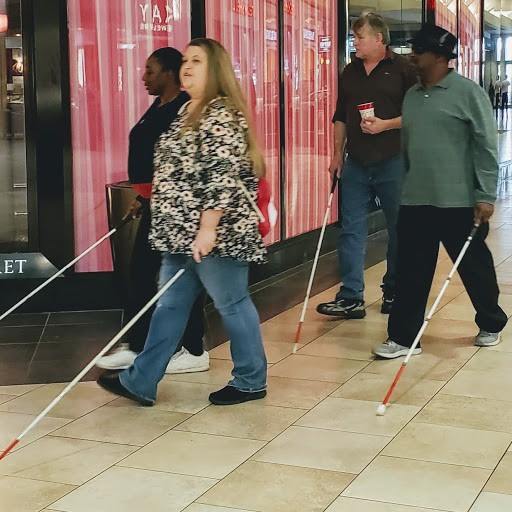Navigating the Path to Safety: Understanding the Importance of White Cane Safety Day
- September 26, 2023
- / Author Name
- / White Cane Safety

Every year, on October 15th, the world observes 'White Cane Safety Day' - a day dedicated to raising awareness about the importance of white canes in ensuring the safety and independence of visually impaired individuals. This observance highlights the significance of these canes as a tool that facilitates mobility and enhances the daily lives of those with visual impairments.
White Canes play a vital role in assisting individuals with low vision or blindness in confidently navigating their surroundings. By using a white cane, individuals can detect obstacles, uneven surfaces, and changes in terrain, allowing them to move about safely and independently. This day serves as a reminder to society to respect the rights of visually impaired individuals and to create an environment that is accessible, inclusive, and safe for all.
In addition to celebrating the capabilities of the white cane, White Cane Safety Day also serves as an opportunity to educate the public about the challenges faced by individuals with visual impairments. By understanding the importance of white canes, we can all contribute to a more inclusive and supportive society.
Join us in recognizing White Cane Safety Day and supporting visually impaired individuals in their journey toward independence and safety.
What is White Cane Safety Day?
White Cane Safety Day, observed every year on October 15th, is dedicated to raising awareness about the significance of white canes in ensuring the safety and independence of visually impaired individuals. White canes serve as a tool that facilitates mobility, allowing individuals with low vision or blindness to navigate their surroundings with confidence. By detecting obstacles, uneven surfaces, and changes in terrain, white canes enable visually impaired individuals to move about safely and independently.
The history of White Cane Safety Day
White Cane Safety Day was first recognized in the United States in 1964, when President Lyndon B. Johnson signed a proclamation designating October 15th as a day to celebrate the achievements and capabilities of visually impaired individuals. Since then, this observance has spread worldwide, highlighting the importance of white canes and advocating for the rights of visually impaired individuals.
The Significance of White Cane Safety Day
White Cane Safety Day holds great significance in promoting inclusivity and advocating for the rights of visually impaired individuals. It serves as a reminder to society to respect the autonomy and independence of visually impaired individuals and to create an environment that is accessible, inclusive, and safe for all. This day also provides an opportunity to educate the public about the challenges faced by individuals with visual impairments and to foster a greater understanding of their needs.
The importance of white canes for visually impaired individuals
White canes play a vital role in the lives of visually impaired individuals, enhancing their daily routines and facilitating their navigation. By using a white cane, individuals with low vision or blindness are able to detect obstacles such as curbs, stairs, and uneven surfaces. The cane's long, flexible design allows for tactile feedback, providing information about the surrounding environment. This enables visually impaired individuals to make informed movement decisions and helps prevent accidents or injuries.
In addition to physical obstacles, white canes serve as a visual cue to others, signaling that the person using the cane has a visual impairment. This helps create awareness and prompts others to be more considerate and accommodating. By promoting independence, safety, and inclusivity, white canes empower visually impaired individuals to participate fully in society.
Common misconceptions about white canes
Despite the importance of white canes for individuals with visual impairments, common misconceptions persist. One misconception is that white canes are solely used by individuals who are completely blind. In reality, white canes benefit individuals with varying degrees of visual impairment, including those with low vision. White canes provide valuable assistance in navigating unfamiliar environments and ensuring safety for all visually impaired individuals.
Another misconception is that visually impaired individuals always need assistance or guidance. While some individuals may require assistance in certain situations, many visually impaired individuals can navigate independently with the help of their white canes. It is important to recognize and respect the autonomy and capabilities of visually impaired individuals, supporting their independence and self-reliance.
Promoting awareness and understanding of white cane safety
White Cane Safety Day serves as a platform to promote awareness and understanding of the importance of white canes in the lives of visually impaired individuals. Society must recognize the significance of white canes and the challenges visually impaired individuals face. We can create a more inclusive and supportive environment by fostering empathy and understanding.
One way to promote awareness is by sharing stories and experiences of visually impaired individuals who use white canes. These personal narratives can provide valuable insights into the daily struggles and triumphs of navigating the world with a visual impairment. By amplifying these voices, we can raise awareness and promote understanding.
Organizations and communities can also organize events, workshops, or informational sessions to educate the public about white cane safety. These initiatives can include demonstrations of white cane techniques, discussions on accessibility, and providing resources for individuals to learn more about supporting visually impaired individuals in their communities.
White cane safety tips for pedestrians
Certain safety tips for visually impaired individuals using white canes can enhance their mobility and ensure their well-being. Here are some key tips:
1. Hold the cane correctly: Grip the cane firmly with your dominant hand, placing your index finger on the top of the cane for better control.
2. Sweep the cane: Move the cane in a side-to-side sweeping motion in front of you to detect any obstacles or changes in terrain.
3. Listen and observe: Pay attention to auditory cues and use your other senses to gather information about your surroundings.
4. Use crosswalks and pedestrian signals: Take advantage of crosswalks and pedestrian signals to safely navigate busy intersections.
5. Communicate with others: When approaching others, use verbal cues to indicate your presence and intention to pass.
6. Stay visible: Wear reflective clothing or accessories to increase visibility, especially in low-light conditions.
Remember, these tips are for visually impaired individuals and pedestrians who encounter individuals using white canes. By being aware of and respecting the needs of visually impaired individuals, we can all contribute to a safer and more inclusive community.
Conclusion: Embracing inclusivity and promoting white cane safety
White Cane Safety Day serves as a reminder of the importance of white canes in promoting the safety and independence of visually impaired individuals. By understanding the significance of white canes and the challenges individuals face with visual impairments, we can contribute to a more inclusive and supportive society.
We can promote empathy, understanding, and respect for visually impaired individuals through education, awareness campaigns, and community involvement. By embracing inclusivity and supporting white cane safety, we create an environment that is accessible, inclusive, and safe for all.
Join us in recognizing White Cane Safety Day and supporting visually impaired individuals in their journey toward independence and safety. Together, we can navigate the path to a more inclusive future.
 2023 Blues on The Beach Getaway
2023 Blues on The Beach Getaway